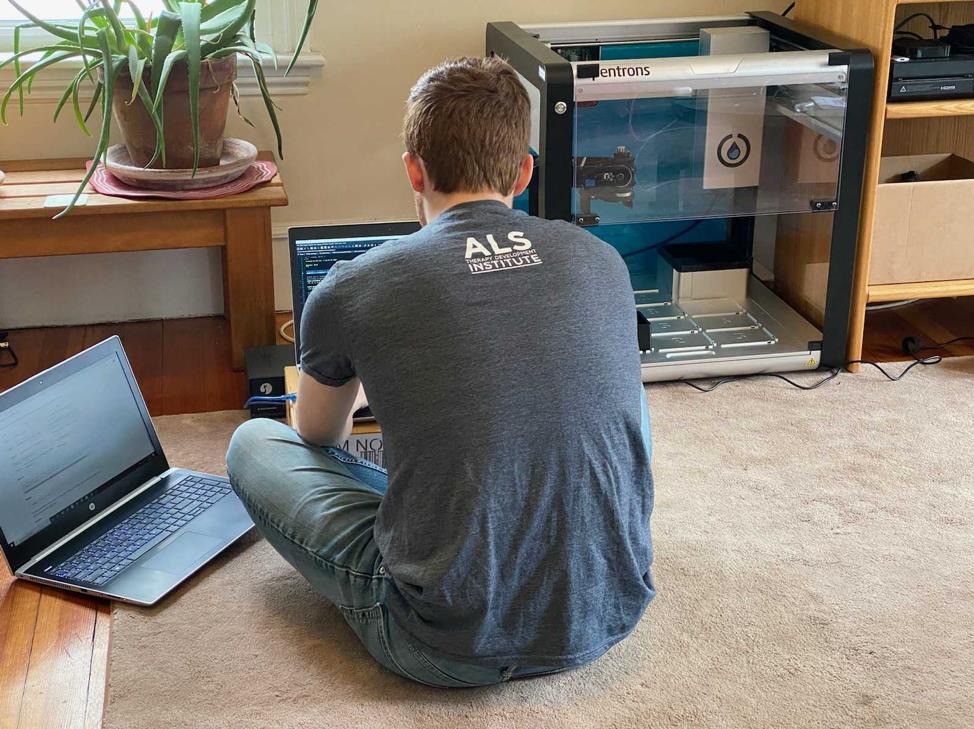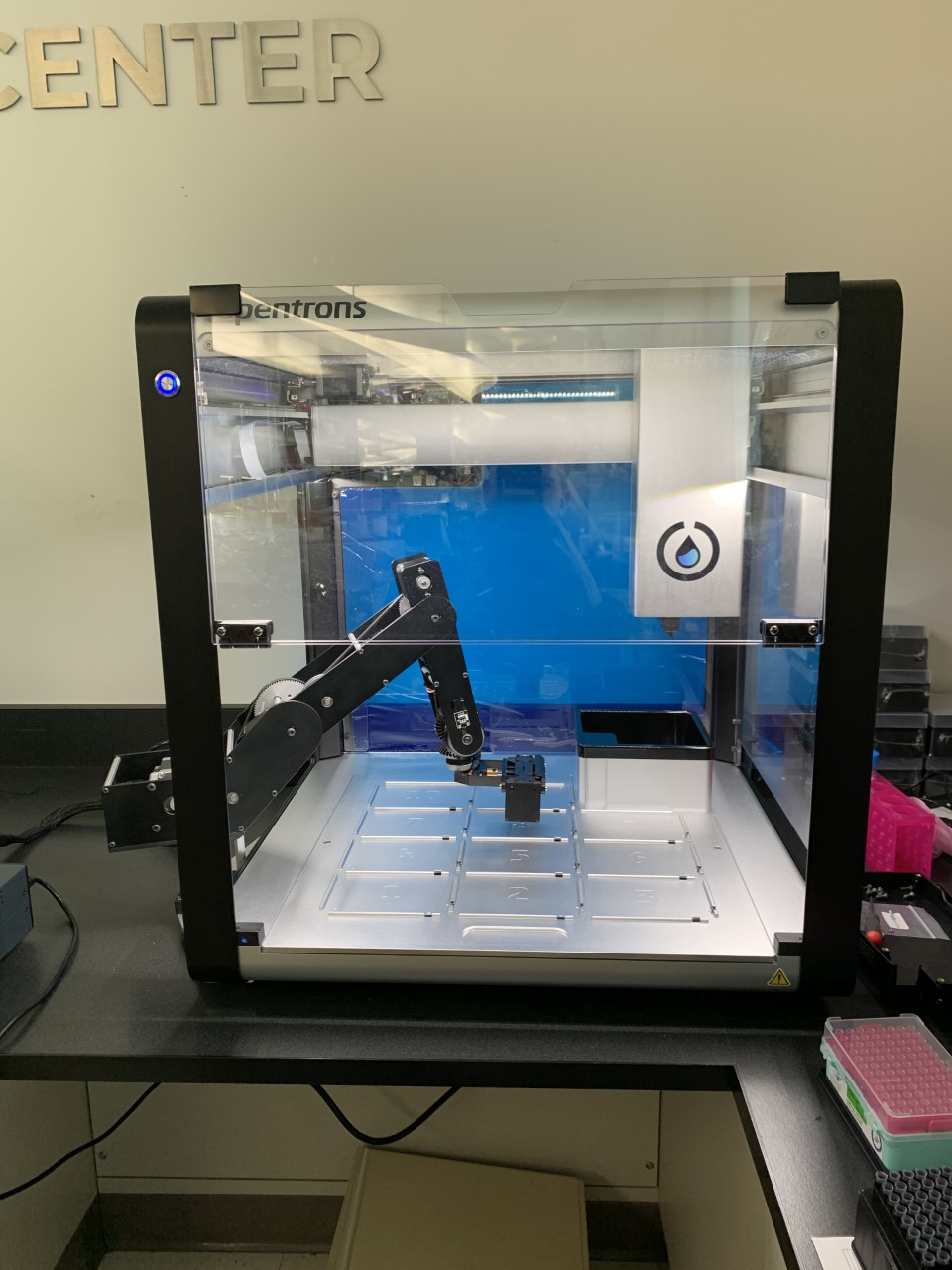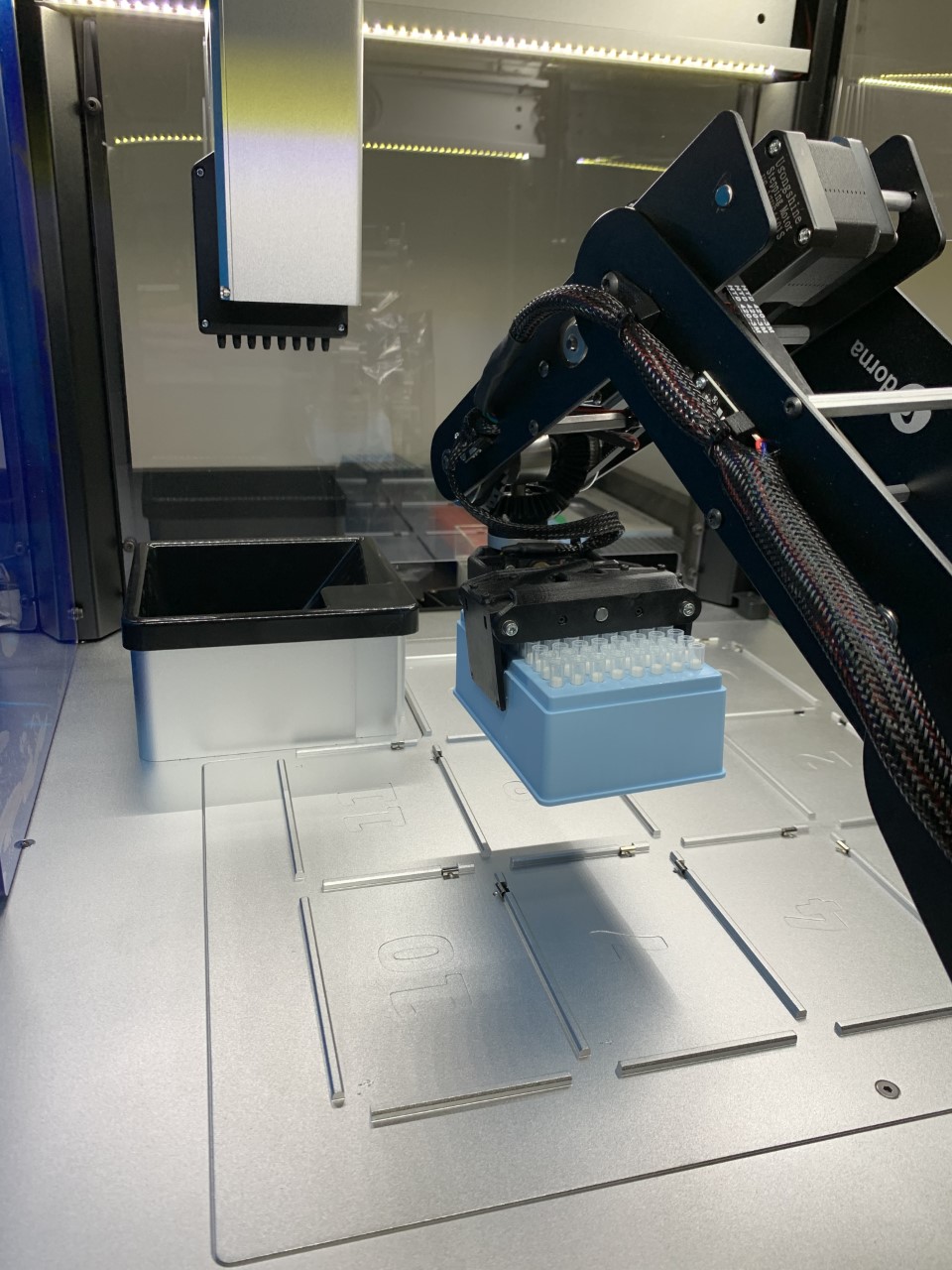 Nick Hellmann hard at work on his robot project.
Nick Hellmann hard at work on his robot project.
People all over the world are currently adjusting to the reality of working from home in the wake of the COVID-19 pandemic. For researchers at the ALS Therapy Development Institute (ALS TDI) like Nick Hellmann, this can be a lot more complicated than simply finding a good WIFI signal and committing to a never-ending schedule of zoom meetings. However, like the rest of our science team, he is finding innovative ways to continue our work of finding effective treatments for ALS.
For Nick, a scientist on the Translational Research team, this has meant bringing a robot home to his apartment. Nick is dedicating his time in lockdown to modifying what was an older, out-of-service machine, into an automated device that will allow his team to work more efficiently when they get back into the lab.
The robot Nick is working with is an Opentron OT-2, a small liquid handler – a machine that automatically dispenses liquids such as reagents or biological samples onto plates in order to test multiple compounds rapidly. In the lab, a much larger machine that can prepare plates for experiments on its own through automation, lovingly nicknamed “Cor2-D2,” does the majority of this work. ALS TDI has two of the older, smaller OT-2s, one of which is still used in the lab. Before quarantine, Nick had the idea that it’s out-of-use partner could be repurposed to make some projects in the lab more efficient. He decided to do this by modifying a separate robotic arm to prepare experiments automatically like its bigger cousin.
 The OT-2 and the custom robot arm in the lab
The OT-2 and the custom robot arm in the lab
“I was like, we should be using these machines,” he says. “They’re able to reduce some of the time that researchers have to spend prepping an experiment.”
So, in March, as we prepared to scale down our in-person operations for the health and safety of our lab staff and their families, Nick packed up one of the OT-2s, along with the robot arm, for his work-from-home robotics projects. He’s currently working on modifying the robot arm, outfitted with a custom 3D-printed gripper from a company called Bare3D at the end, to prepare samples for testing in the OT-2 quickly and efficiently. Most importantly, the custom robot will be able to run a program and do this on its own, freeing up the scientists to work on other projects while the plates are prepped.
“There is one procedure in particular that gets done on these small robots that would take our researchers up to two hours, depending on the size of the experiment that we're running,” he says. “With this, we just put everything on press go and then can go off and prep other experiments.”
 Closeup view of the custom robot arm.
Closeup view of the custom robot arm.
Nick is currently also waiting on the delivery of a custom fabricated “plate hotel,” a holder where the robot will place plates that have been prepared as they wait for testing. Beyond these physical modifications, he is also working on programming the robot to perform these tasks. With all of these custom modifications, every movement of the robot arm must be painstakingly coded.
“The robot arm doesn't have a nice user interface, so everything has to be coded for every single movement,” he says. “So, from startup to moving to picking up and putting back the plates, all of that needs to be coded so it doesn't run into the side of the machine.”
There’s still plenty of work to be done on this project, but when all is said and done, it will free up valuable time for the translational research team once they are back in lab.
To learn more about the translational research happening at ALS TDI, click here.